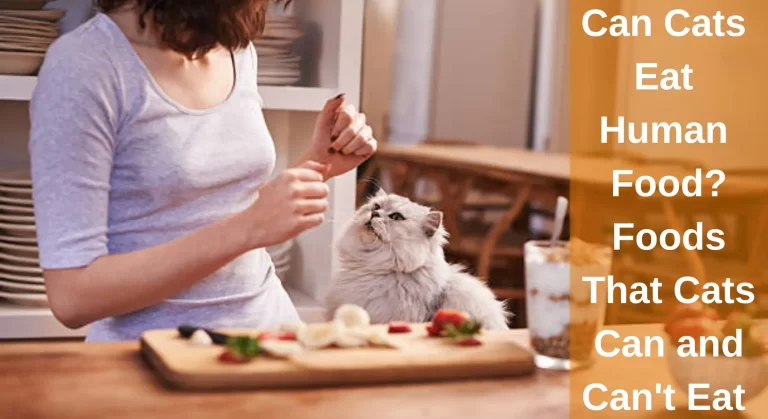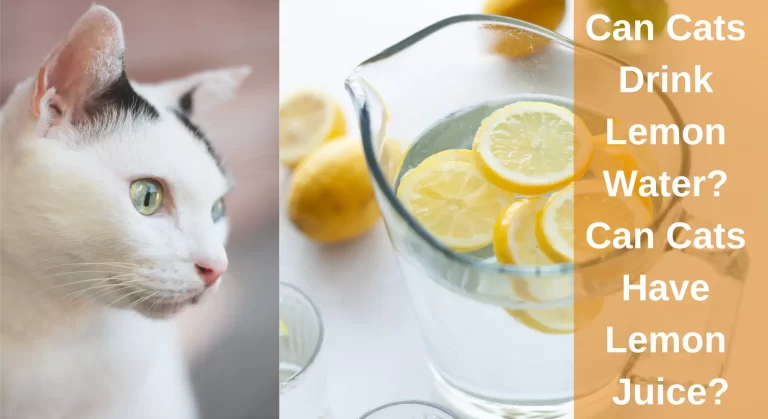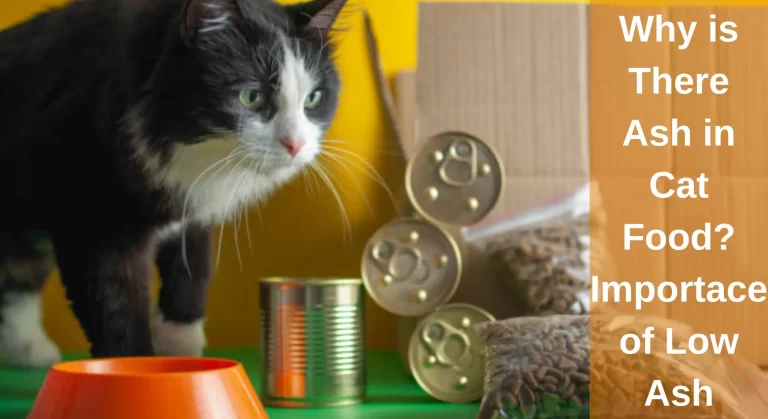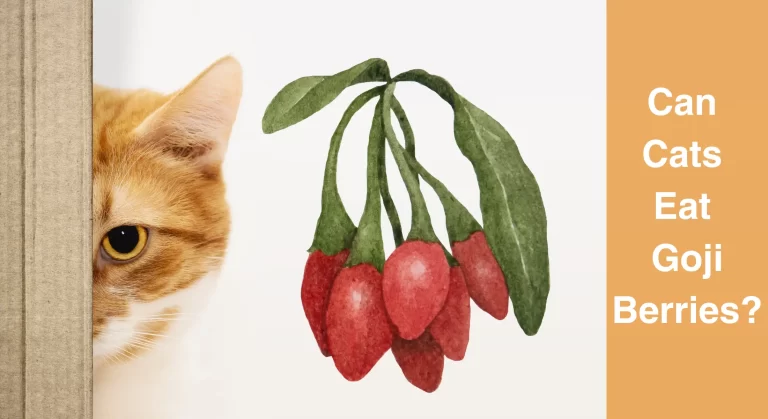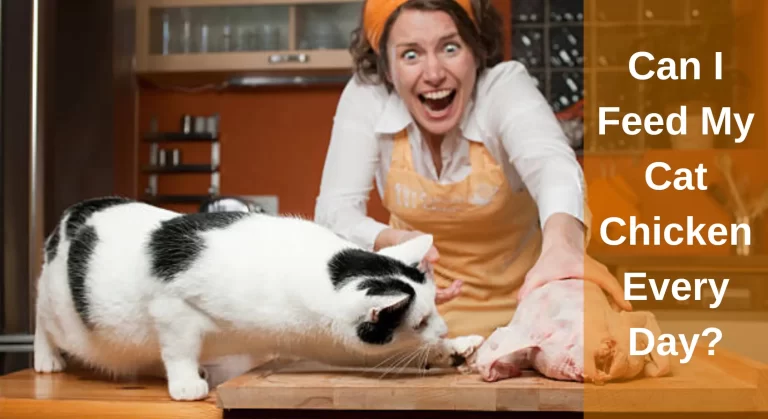When Do Kittens Start Eating Food And Drinking Water? [Answered]
When you bring a new kitty to your home, you should care about a big transformation: weaning from breastmilk to solid meals. Moreover, if you’re a newbie to cat parenting, you might find yourself in a tough situation to raise a new kitten. Also, most cat owners frequently ask when they should feed their kitten’s solid food and liquids. When Do Kittens Start Eating Food And Drinking Water?
Kittens begin to consume solid meals and drink at the age of around 8-9 weeks. However, water is essential to keep kittens hydrated when they’re young, so they consume their mother’s milk at the age of 4-6 weeks. It is therefore advised that you must separate the kitten from his mother after 1 month. Because if you separate them before this growth stage, they may experience behavioural disorders or other medical issues.
It’s very important to decide what food you give your kitty when they’re young and when is the appropriate time to wean. Don’t worry; in this article, I’m going to tell you what you should feed your kitty and how to introduce them to new meals. Continue reading to learn how you can grow your small kitten into a strong and joyful adult cat.
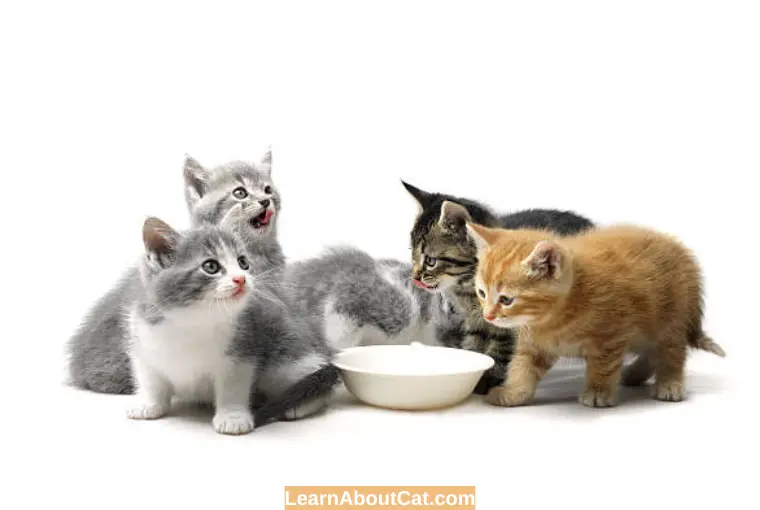
What to Feed Newborn Kittens?
For the kitten’s mother, milk is the very first meal they consume after birth. Because it’ll transfer mother antibodies to fight against the most contagious infections, this diet is essential for newborns.
However, if you have fostered a lactating kitten or if its mama cat rejects him, in that case, you should bottle-feed your kitten with specific formula cat milk after every 2 hours. Don’t use cow’s milk because kittens’ stomachs can’t digest it.
So, whether your kitten is adopted or weaned by his mother, they can easily consume milk by lactation and bottle feeding. Moreover, newborn kittens consume milk that is high in fats, antibodies, and nutrients.
Breastfeeding and bottle-feeding provide lipids, immunoglobulin, and essential micronutrients to the kittens.
Check Out: When Can Kittens Leave Their Mom?
When Do Kittens Start Eating Food And Drinking Water?
As a kitten weans, it switches from mother’s milk to kibble and water, which it will consume in one form or another for the rest of its life. It’s best not to interfere when the mother cat is around so that she can wean when the time is right.
Find Out: Why Is My Nursing Cat Always Hungry? [Answered]
When Do Kittens Start Eating Solid Food?
Your kitty will start eating solid food after 4 weeks, when her teeth start to develop, at the age of 9 weeks of nursing. They must be fed with foodstuff that is suitable for them. To help it easily adjust to the eating phase, it is advised to soften it slightly with liquid or add some soft food.
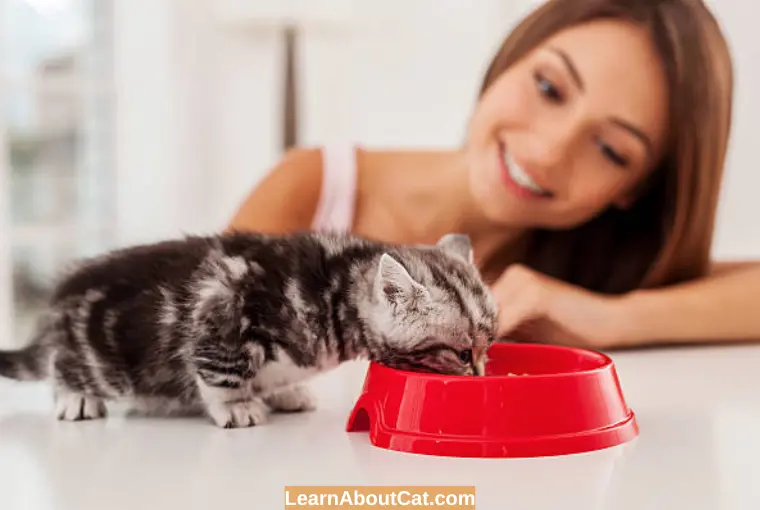
Between the completion of nursing and the age of 1 year, cats need to eat food that is rich in highly nutritious carbohydrates, antioxidants, and fatty acids. The quantity to be fed is determined based on the size and the guiding charts that are provided on the jars, and the food should be of exceptional quality.
Furthermore, your veterinarian can advise you on you how much you can feed your kitten. For this phase of development, you can also prepare homemade meals if you’d like, but our veterinarians advise against it because it’s very challenging to keep a proper balance of all the essentials.
- Kittens are prepared to start eating at the age of four weeks. However, cats under four weeks are termed neonatal and may not be prepared to be separated from their breast milk.
- Firstly, you’ll realize that kittens used to be more active and could balance on their claws while clutching their tails whenever they’re prepared to kick the habit. Secondly, they’ll also have their teeth at this stage.
- Likewise, it’s too early to start eating solid food if your kitten can’t abide, explore, or concentrate on their gaze. If somehow the kitten displays signs of competence, you can commence weaning. Make sure the kitten is receiving adequate nutrition by trying to keep a regular check on them.
Also Read: The Ultimate Guide to How Much to Feed a Kitten?
When Do Kittens Start Drinking Water?
Kittens require water in addition to their breastmilk, which they consume till the age of 4 weeks when their mother weans. But after the weaning period, most kitties can’t digest sugar molecules in milk effectively; thus, water becomes their prime source of fluid intake.
You will be able to recognize the signs of dehydration in your kittens by their weak and sleepy behaviour. Water is essential to almost every bodily function. It is important for kittens to drink enough water to maintain a healthy blood volume, as their muscles and brains cannot receive enough blood flow without it.
In order to give your kittens a healthy start, it is wise to introduce them to water at the same time they are introduced to solid food: at the age of 4 weeks.
What Do You Feed a 4-Week Old Kitten?
You should begin by giving the young cat “cereal,” or soggy cat food, together with some dried food made specifically for kittens. Give them a tiny batch of cereal which is made by combining 1/4th can of formula and half a can of moist kitty food. After the kitten has reached the age of four weeks, keep in mind to give it a deep bowl filled with clean water along with half a can of dry kibble and porridge.
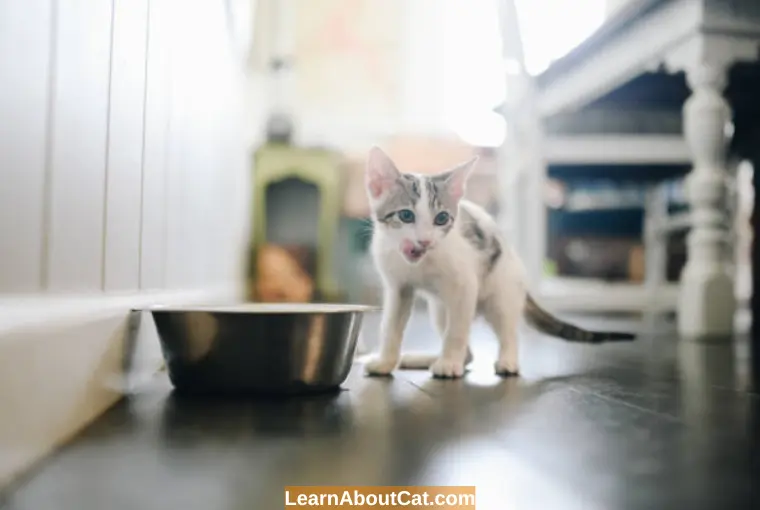
Kittens of 2.2 pounds will consume 50-60 millilitres of water. So, you must leave water for your kitten, but you shouldn’t be shocked if she won’t finish it. To ensure the kitten maintains its size and receives all the nourishment it needs, continue to give your kitties a milk substitute in a feeding bottle.
You must provide your kitten with this formula milk 3 times a day after every 8 hours or let them drink whenever they want. It is also wise to measure your kitten’s weight regularly to ensure it’s growing and maintaining weight normally.
- Dry kitten food, 1/2 can of gruel for each kitten, and a bowl of water nearby at all times make up the diet. Add three daily doses of formula.
- Maintain constant availability of gruel, water, and food in the cage.
- Every eight hours, provide 13 to 17 cc of the formulation 3 times a day.
- Try to get the kittens to consume liquids from a bottle while also eating their gruel with a spoon. It’s important to start feeding them gruel in little doses.
- Keep in mind that you should also introduce the litter box at this age because young kittens may already be eliminating on their own.
On the contrary, mature cats consume fifty to sixty millilitres of water per kg of body
weight. You may leave that out for a cat, but don’t expect her to drink it all. They should
still be fed formula three times a day.
Interesting Reading: How Long Should Kittens Eat Kitten Food?
How Do You Introduce Kittens to Food?
The weaning process makes felines habitual of mother’s milk, and it could be more difficult for a kitty who has been bottle-fed to survive without the guidance of his biological mother. You’ve to do a lot to assist in building a solid nutritional basis for your little kitty, so there’s no reason to feel guilty as a kitten caretaker.
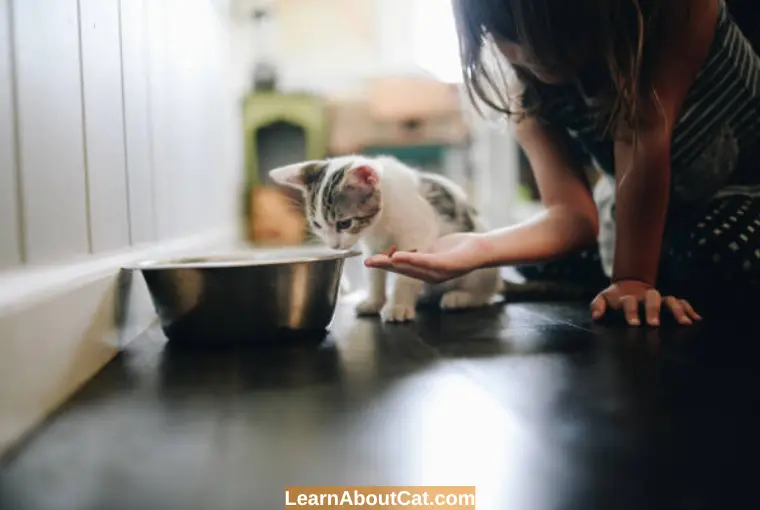
Your kitten will need your care and close observation while it adjusts to a new diet. Feed your kitty cereals, dry kibble, and drinks when it becomes 4 weeks old, but don’t worry about the quantity it consumes. However, you must encourage your cat to try to adjust to the flavour and texture of new food.
If your cat is habitual of bottle-feeding and your kitten doesn’t appear to be consuming from a plate, you may feed him cereal from a spoon or using a spatula.
When preparing the cereal, switch the cat food with kitten food and the formula milk with water at the age of 4 weeks. For every kitty, keep a half-can of food and some cereal or moist meal on a plate. Also, give them a bowl of water so that if they get thirsty, they have easy access to it.
The age of 5-6 weeks is known as the transitional age in which the body adapts and reacts to changes in food or environment. So, in order to prevent any digestive problems, you should continue giving kitties milk along with cereal. Increase the cereal while gradually decreasing the formula milk amount. By following this routine, your kitty will begin eating dry food after 7 weeks and will become habitual of dry food or drinks at the age of 8 weeks.
The Onset Of Weaning In Kitten
Firstly, to start the weaning phase, segregate the kitten from her mother for a few hours at a stretch. Consequently, the kitten’s dependency on their mother’s milk would gradually reduce. Moreover, the mother and the kitten must have their own space with nutrition, water, and a waste container.
As long as the kitten is ready to spend prolonged periods alone, as they get more adjusted and competent until they are completely weaned.
It’s important to keep in mind that taking a kitten away from its mother too soon might have bad effects for both mother and kitten, including aggressiveness and other unpleasant characteristics. Similarly, Kittens observe their mother or even another mature cat figure out how to play, feed, interact and use cat litter. Therefore, a kitten should preferably be left with its mother.
Also, Check Out: Sugar Water For Kittens
Taking Good Care Of Kittens
If you’re looking after an adolescent kitten, you might be concerned about when you should start giving him regular meals. For breastfeeding kittens and bottle-fed cats, weaning may seem a little unique. Since you’re caring for the cat and her kittens, first allow the cat to take charge. Getting involved with her while weaning her kittens off the milk might make things more difficult for everyone. During the fourth week, you should start putting gruel, dry food, and a water dish on the kitten, whether the kitten is feeding on its mother or a bottle. Likewise, allow the kitten to wander; don’t worry about how much they ingest.
Find Out: Do Kittens Need Wet Food?
Frequently Asked Questions
What are the pitfalls to watch out for?
While introducing new food to your cat, you must look for the following pitfalls:
· You mustn’t provide them with toxic food like chocolate, onion, caffeine products, etc.
· Don’t let them swallow meat bones or small bits of raw bones.
· Don’t provide them with extra fatty and salty foods
· Don’t feed them large pieces of vegetation
· Don’t give them raw bone or meat as it may contain harmful bacteria
· Keep an eye on your kitten’s pooping routine or constipation issues
Is the timing of weaning different for hand rears?
Sadly, no. The desire to introduce solid foods early for the tiny kittens is normal after a few weeks of nonstop night feedings. The ideal time to introduce solid foods to hand-reared kitties is almost 4 weeks, and definitely not earlier than 3 weeks.
When can kittens eat dry food?
Cats older than 7 weeks can eat mostly dry food. In order to prevent their stomachs from becoming disturbed by the alteration in their diet, both foods are mixed during the period of 5 and 6 weeks, transitional weeks.
Final Thoughts!
Weaning is the act of progressively transitioning an infant cat or other mammal to its grownup diet while removing its mother’s milk supply. When the kitten is no longer provided breast milk, it is considered completely weaned.
The kitten will intuitively go to the food dish when the weaning process starts. Otherwise, we may encourage them by feeding them with our hands so they can grow used to the habit. If they reside with the mother, allowing the kitten to see and replicate the mother’s eating habits is good.
Related Posts:
Who is Isabella?
My name is Isabella, and I am a dedicated and knowledgeable cat enthusiast. With years of experience caring for cats and a deep love for felines, I made a mission to help other cat lovers navigate the challenges of cat ownership.

